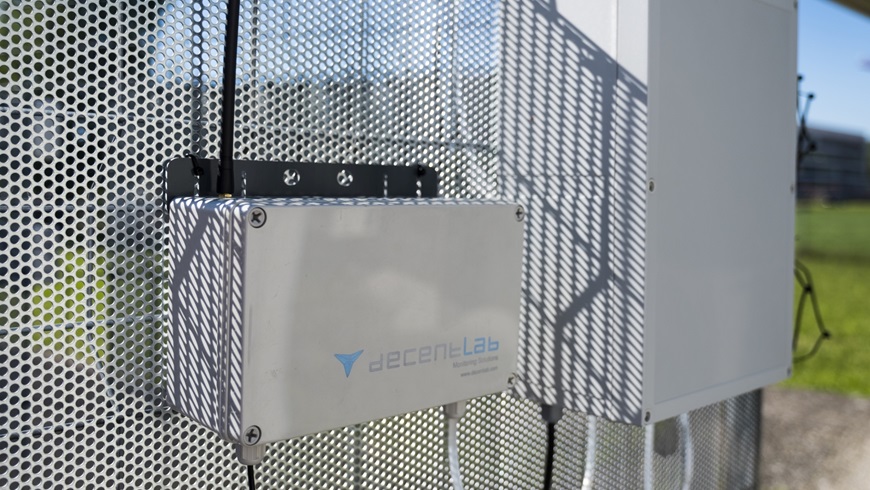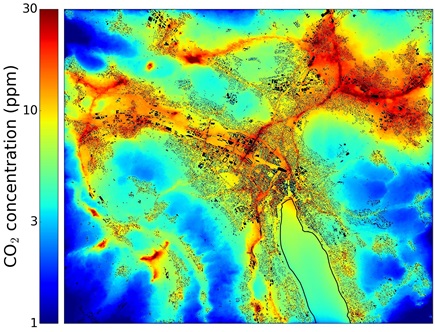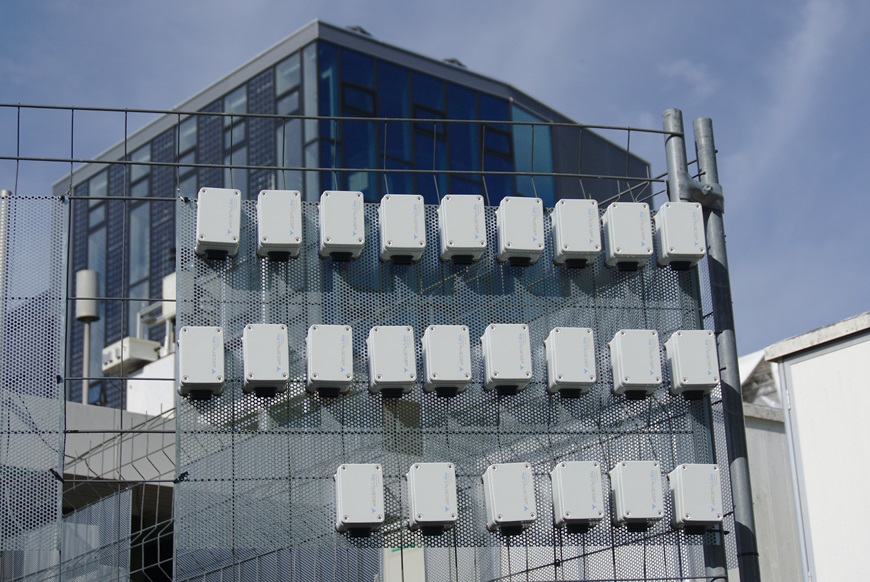Carbosense 4D
High-res CO2 observation over Switzerland
Switzerland is to gain a dense, globally unique atmospheric CO2 measuring network: 300 sensors will permanently collect up-to-date readings, to provide near-real time information on man-made emissions and CO2 uptake by the biosphere

The Carbosense4D project will combine data science methods, atmospheric observations, and atmospheric transport modelling to determine the evolution of carbon dioxide (CO2) over Switzerland at high spatial and temporal resolution. Three hundred low-cost CO2 sensors distributed over Switzerland in the framework of the ongoing CarboSense project will be offering an unprecedented density of continuous CO2 observations. Accurate knowledge of the 4-D distribution of CO2is of great interest to study anthropogenic CO2 emissions and exchange fluxes with the biosphere, for the validation of satellite CO2 observations and to provide lateral boundary conditions for models tracking city-scale CO2 emissions. Overall, CarboSense4D will help improving our understanding of the regional carbon cycle and contribute to the independent validation of national greenhouse gas reduction pledges in the light of the international Paris climate accord.
For the City of Zurich, where the sensor network will be particularly close-knit, Empa developed a computer model that simulates the CO2 concentration from ten different sources. These emission sources include various modes of traffic, industry and heating in residential buildings. By combining these simulations with the sensor data, Empa will be able to display the city’s current CO2 emissions almost in real time. “This will give us measurements with a sufficient density to follow Zurich’s CO2 emissions day by day,” says Lukas Emmenegger, head of Empa’s Laboratory for Air Pollution/Environmental Technology. “What’s more, the measurements will provide valuable information on the spread of other air pollutants.”

The scientific and technical applications based on the sensor data recorded all over Switzerland, on the other hand, will be invaluable for traffic planning, healthcare measures, developments linked to “smart cities”, and even for a better understanding of the exchange of CO2 between the atmosphere and the vegetation.
Carbosense4D, is a collaboration between Empa, the ETH Domain’s Swiss Data Science Center (SDSC) and the Center for Climate Systems Modeling (C2SM). Additional key partners are the Empa spin-off Decentlab and Swisscom. The 300 battery-powered sensors will be installed at Swisscom antennas and other locations including sites of MeteoSwiss and will transmit their readings via Swisscom's Low Power Network to the cloud infrastructure of Decentlab and to the computing centers at SDSC . The Low-Power-Network offers only a narrow bandwidth but enables transmission over large distances in an energy-saving and cost-efficient manner. This makes it ideal for connected sensor networks supporting environmental applications and communal infrastructure such as the monitoring of parking spaces or containers.
CarboSense4D will also provide feedback to the sensor network itself through detecting and correcting changes in the behaviour of individual sensors. Furthermore, it will act as a proof of concept for the applicability of low-cost CO2 sensors in a machine learning framework and likely trigger similar sensor networks in other countries and regions.
Decentlab, an Empa spin-off
300 measuring devices scattered across Switzerland form the backbone of a new CO2 sensor network. The devices have been built by Empa's spin-off Decentlab which integrated sensors for CO2, temperature and moisture along with a LoRaWAN (Long Range Wide Area Network) communication module. LoRaWAN enables low-power transmission of the data to Decentlab’s cloud and visualization infrastructure and to the data center at SDSC. Empa scientists are currently evaluating the measurements: depending on meteorological conditions, the CO2 sensor values can be distorted by cross-sensitivities to temperature and moisture. Thanks to new mathematical sensor models, however, these deviations can be corrected and losses of individual data packets can be “bridged”.
-
Share
